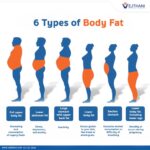The collapse of the Soviet Union in December 1991 marked a pivotal moment in global history, ending the decades-long Cold War and dramatically reshaping the geopolitical landscape. This superpower, once a monolithic empire stretching across eleven time zones, dissolved into fifteen independent nations. Understanding Why Did The Ussr Collapse requires examining a complex interplay of political, economic, and social factors that unfolded in the late 1980s and early 1990s. While seemingly sudden, the seeds of disintegration were sown over decades, culminating in a cascade of events that led to the Soviet Union’s demise.
The seeds of change were sown with the rise of Mikhail Gorbachev to power in 1985. Recognizing the stagnation and inefficiencies plaguing the Soviet system, Gorbachev initiated policies of Perestroika (economic restructuring) and Glasnost (openness). Perestroika aimed to decentralize the economy and introduce market-oriented reforms, while Glasnost sought to increase transparency and freedom of expression. However, these reforms, intended to revitalize the Soviet Union, inadvertently unleashed forces that accelerated its collapse. Glasnost, in particular, allowed for the public airing of grievances and historical injustices, weakening the legitimacy of the Communist Party and fueling nationalist sentiments.
 Boris Yeltsin makes a speech from atop a tank in front of the Russian parliament building in Moscow, U.S.S.R., Monday, Aug. 19, 1991. (AP Photo)
Boris Yeltsin makes a speech from atop a tank in front of the Russian parliament building in Moscow, U.S.S.R., Monday, Aug. 19, 1991. (AP Photo)
Economically, the Soviet Union suffered from deep-seated structural problems. The centrally planned economy, while achieving industrialization and military might, proved incapable of adapting to the demands of the modern era. Decades of prioritizing heavy industry and military spending over consumer goods led to chronic shortages, low living standards, and technological backwardness in civilian sectors. The Soviet economy was also heavily reliant on natural resources, particularly oil and gas. When global oil prices declined in the 1980s, it severely strained the Soviet budget, exacerbating economic woes and fueling public discontent. These economic hardships eroded public faith in the Soviet system and created fertile ground for calls for radical change.
Furthermore, the Soviet Union was a multinational state comprised of numerous republics with distinct ethnic, cultural, and historical identities. For decades, the Communist Party maintained control through centralized power and suppression of nationalist expressions. However, Gorbachev’s Glasnost policy loosened this grip, allowing long-suppressed nationalist sentiments to resurface. Republics like the Baltic States (Lithuania, Latvia, and Estonia), Georgia, Ukraine, and others began to assert their national identities and demand greater autonomy, and eventually, outright independence. The weakening of central authority under Gorbachev provided the opportunity for these republics to push for self-determination, further fragmenting the Soviet Union.
The United States, under President George H.W. Bush, adopted a cautious approach to the unfolding events in the Soviet Union. Initially, the Bush administration supported Gorbachev’s reforms, hoping they would lead to a more democratic and market-oriented USSR. The US engaged in arms control negotiations, culminating in the START treaty, and cooperated with the Soviet Union on international issues like the Iraqi invasion of Kuwait. However, as the Soviet Union became increasingly unstable, US policy evolved to acknowledge the growing momentum for independence in the republics. While prioritizing a peaceful and stable transition, the US also began to engage with leaders like Boris Yeltsin, who represented the rising democratic forces within Russia.
A critical turning point was the August 1991 coup attempt by hardline Communist officials seeking to reverse Gorbachev’s reforms and restore centralized control. This coup, though quickly defeated, fatally weakened Gorbachev’s authority and dramatically boosted the standing of Boris Yeltsin and the pro-democracy movement in Russia. In the aftermath of the coup, the momentum for independence became unstoppable. Ukraine and Belarus declared independence, joining the Baltic states. Recognizing the irreversible disintegration, Yeltsin and the leaders of Ukraine and Belarus formed the Commonwealth of Independent States (CIS) in December 1991, effectively declaring the end of the Soviet Union.
On December 25, 1991, Mikhail Gorbachev resigned as President of the Soviet Union, and the Soviet flag was lowered over the Kremlin for the last time, replaced by the Russian tricolor. The collapse of the USSR was a complex event with multiple interconnected causes. Gorbachev’s reforms, while intended to revitalize the Soviet Union, inadvertently unleashed centrifugal forces. Deep-seated economic problems, resurgent nationalism, and ultimately, the failed August coup all contributed to the demise of this superpower. The world watched in astonishment as the Soviet Union peacefully dissolved, ushering in a new era in global politics.

